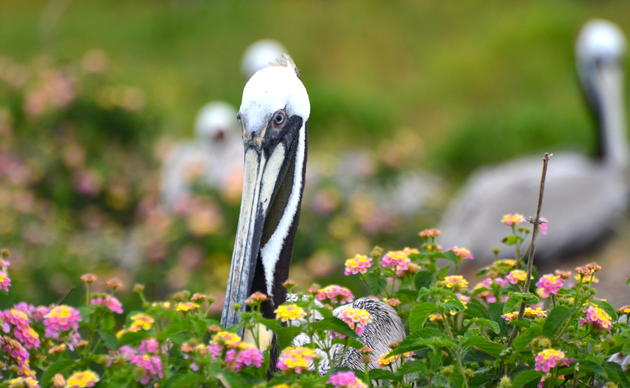Gull-billed Tern
Estimates for Gull-billed Terns in Texas recorded approximately 2100 pairs in 2000-2003, representing over half of the breeding population on the Atlantic and Gulf coast shores. The species generally uses islands as rookery sites, utilizing natural barrier islands, dredge spoil islands and islands within marshes and estuaries. Ideally, colonies are situated near suitable foraging habitats including open mudflats in tidal estuaries, river margins, beaches, salt marshes, freshwater marshes, aquaculture impoundments and a variety of upland habitats including open scrub, pasture and irrigated agriculture fields.
Increasingly Gull-billed Terns have been forced to nest in less than ideal habitat where the colonies are more prone to washouts due to habitat loss and degradation, and reduction of suitable alternative sites as a result of development. If feasible, increasing the number of potential colony sites may improve nesting success as the species has relatively low site fidelity and responds favorably to novel alternative sites.
For more information on Gull-billed Terns, including identification information, visit their page on the Cornell Lab of Ornithology.
Text References
- Erwin, R. M., J. D. Nichols, T. B. Eyler, D. B. Stotts, and B. R. Truitt. 1998. Modeling colony-site dynamics: A case study of Gull-billed Terns (Sterna nilotica) in coastal Virgnia. The Auk 115:970-978.
- Molina, K. C. and M. Erwin. 2006. The distribution and conservation status of the Gull-billed Tern (Gelochelidon nilotica) in North America. Waterbirds 29:271-295.
- Parnell, J. F., R. M. Erwin, and K. C. Molina. 1995. Gull-billed tern (Sterna nilotica).in A. Poole and F. Gill, editors. The Birds of North America. Academy of Natural Sciences, American Ornithologists' Union, Philadelphia & Washington D.C.
How you can help, right now
Join Audubon Texas Today
Becoming a member supports our local work protecting birds and the places they need.
Consider a Legacy Gift for Texas
Planned gifts and bequests allow you to provide a lasting form of support to Audubon Texas.
Subscribe to Our Newsletter
Subscribe to our newsletter for updates about Audubon Texas's conservation work, and news about our activities and local events.




